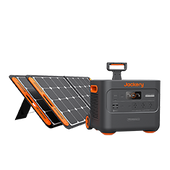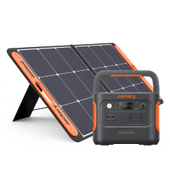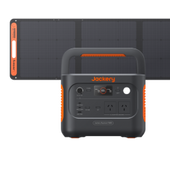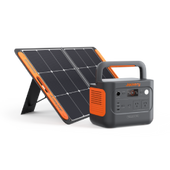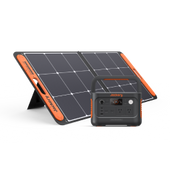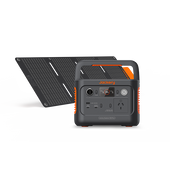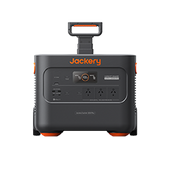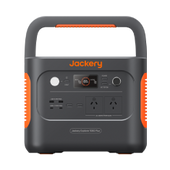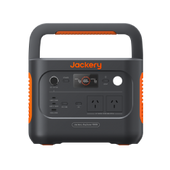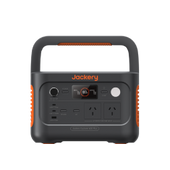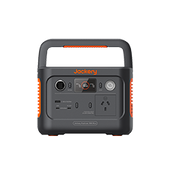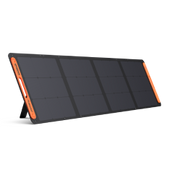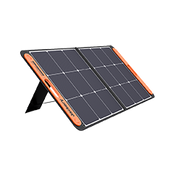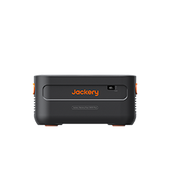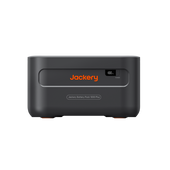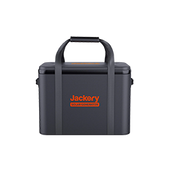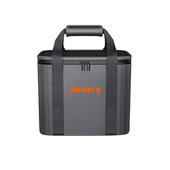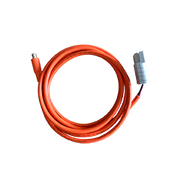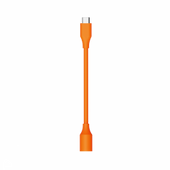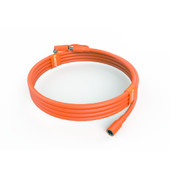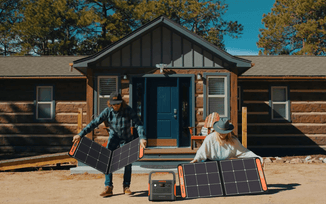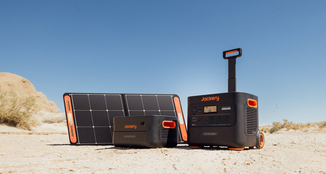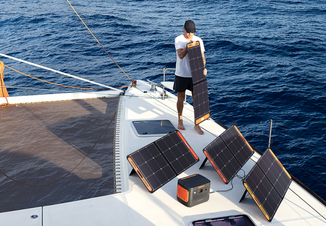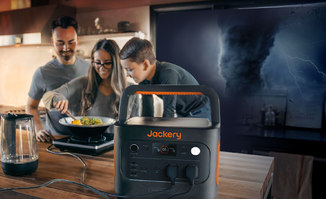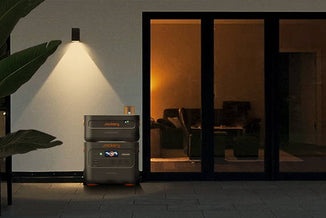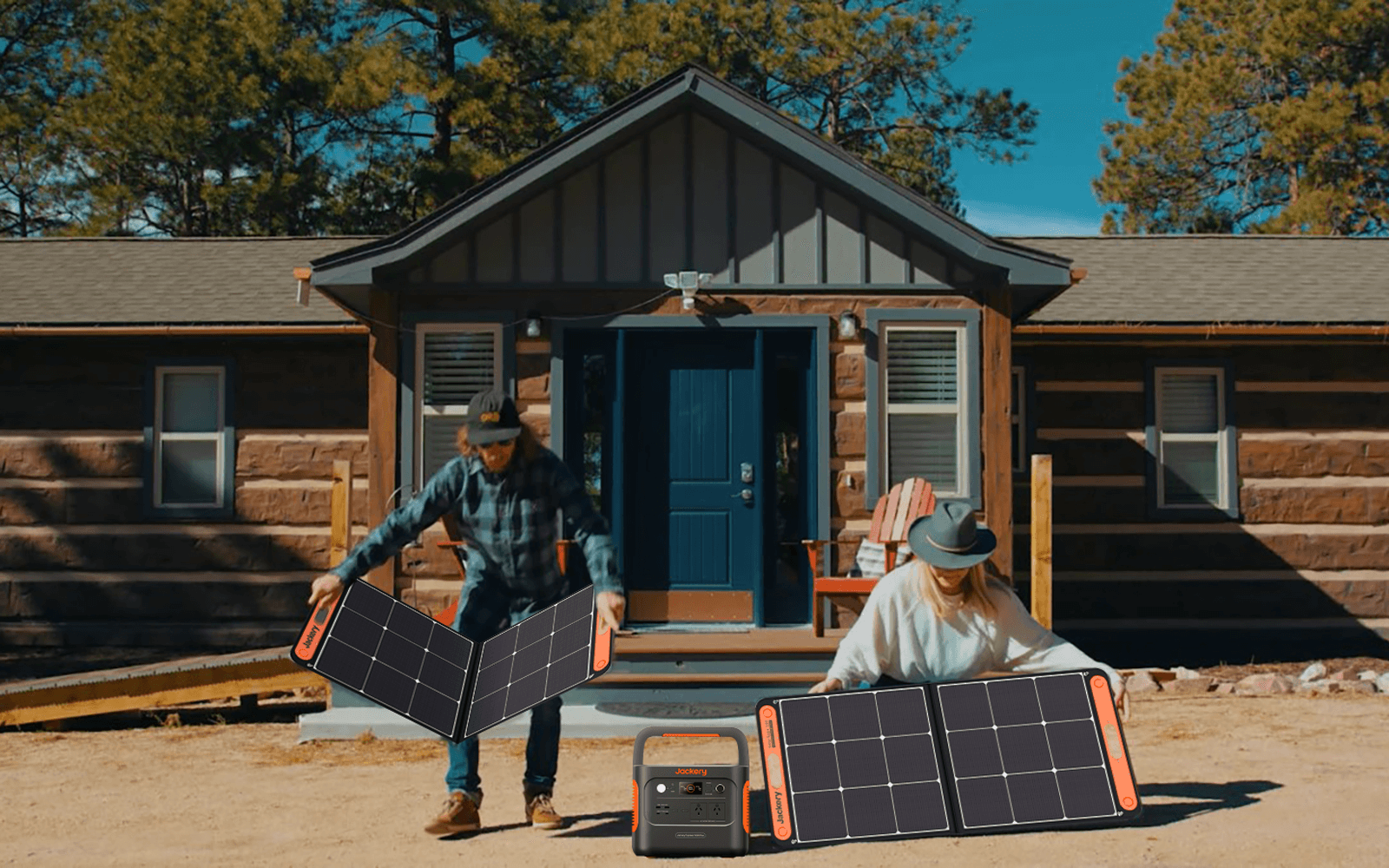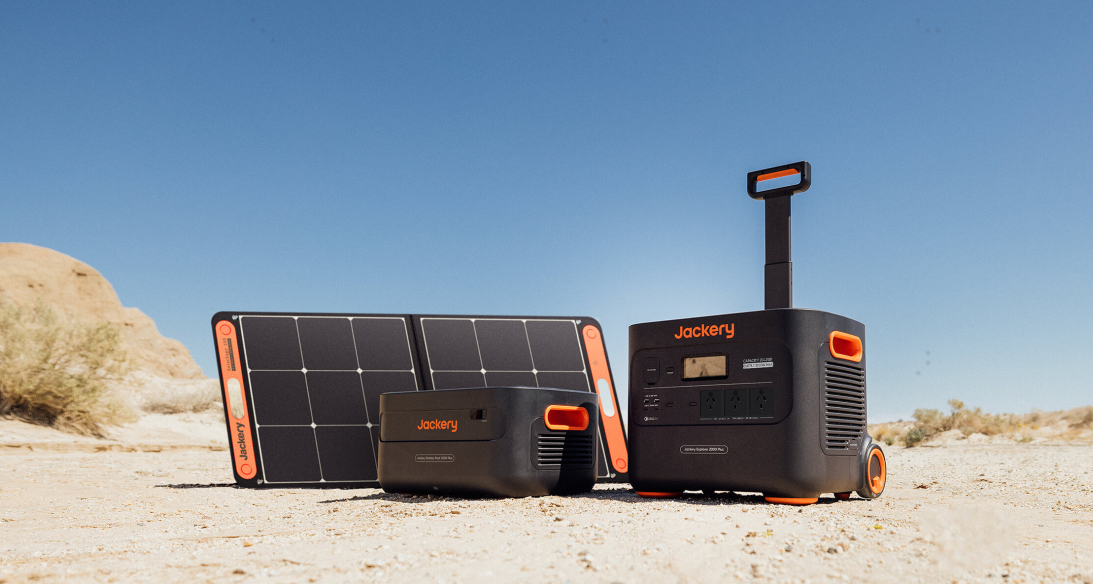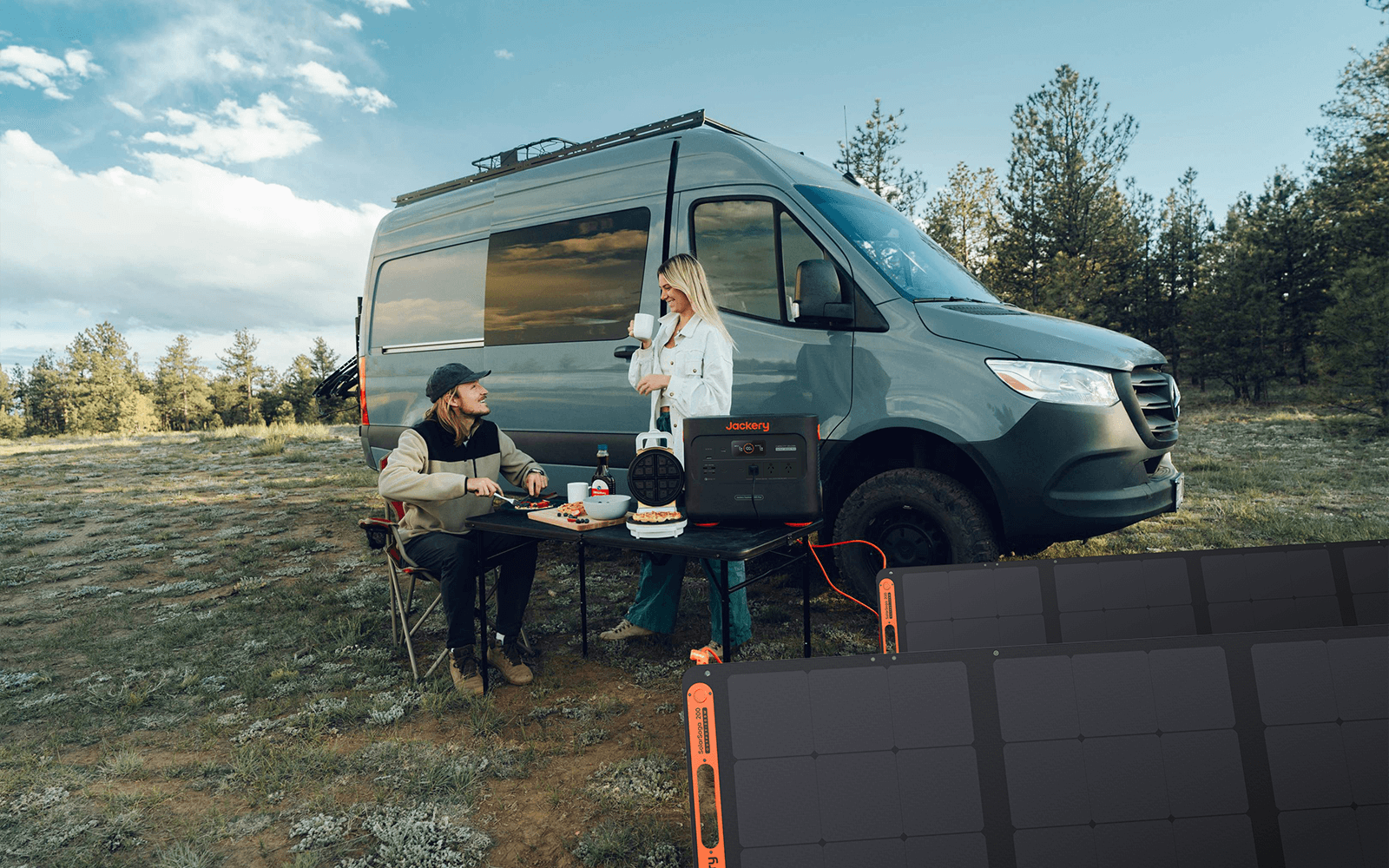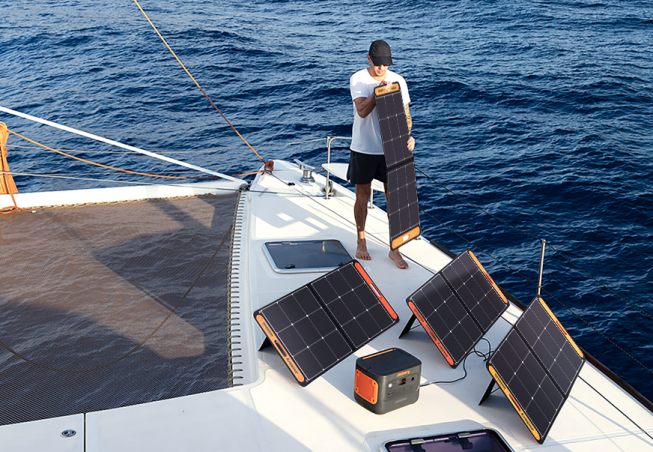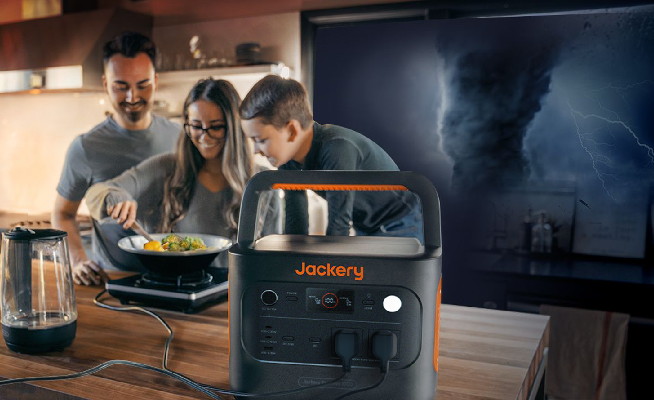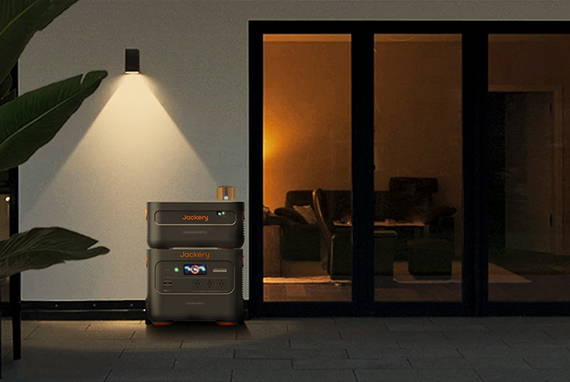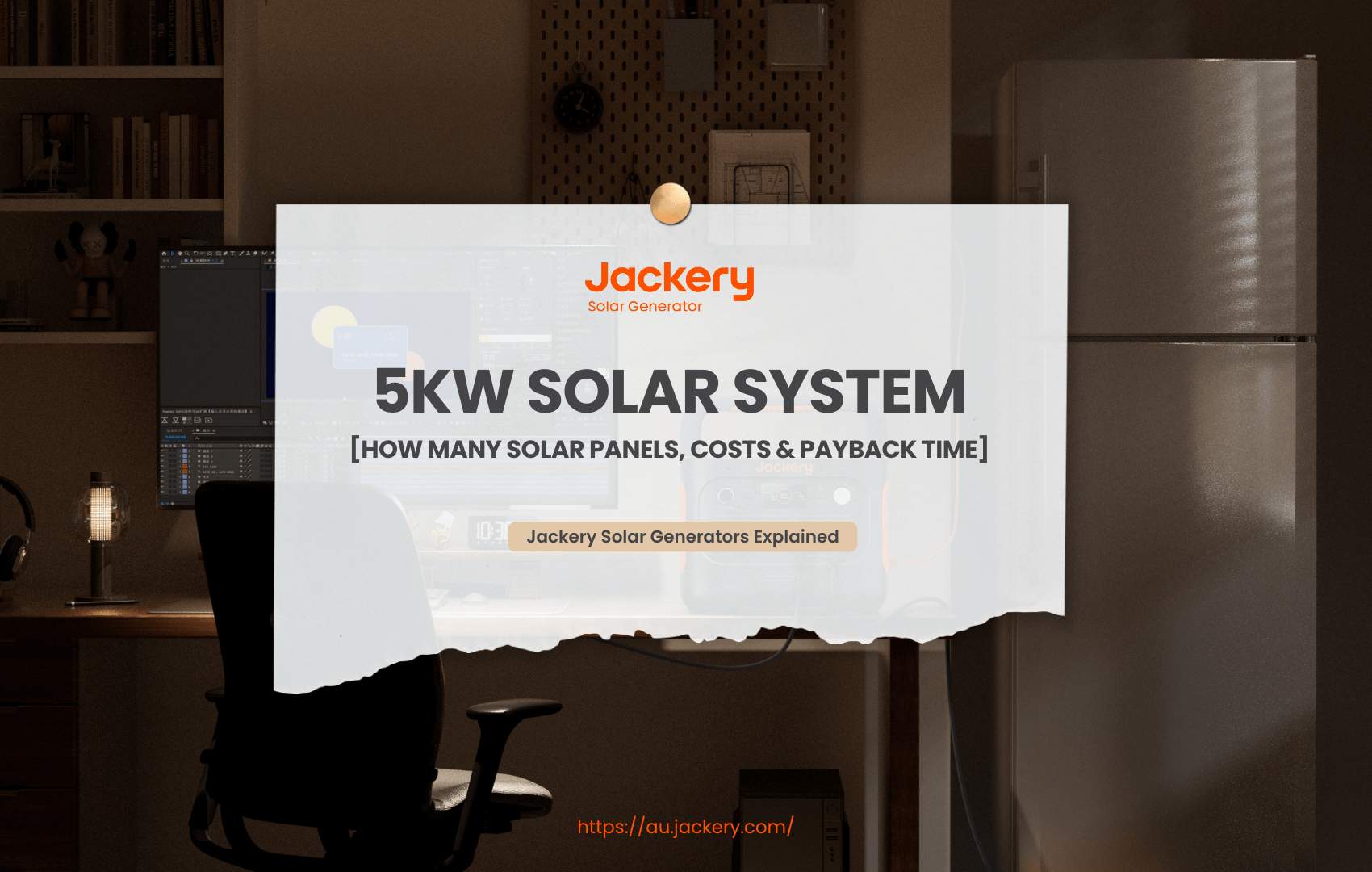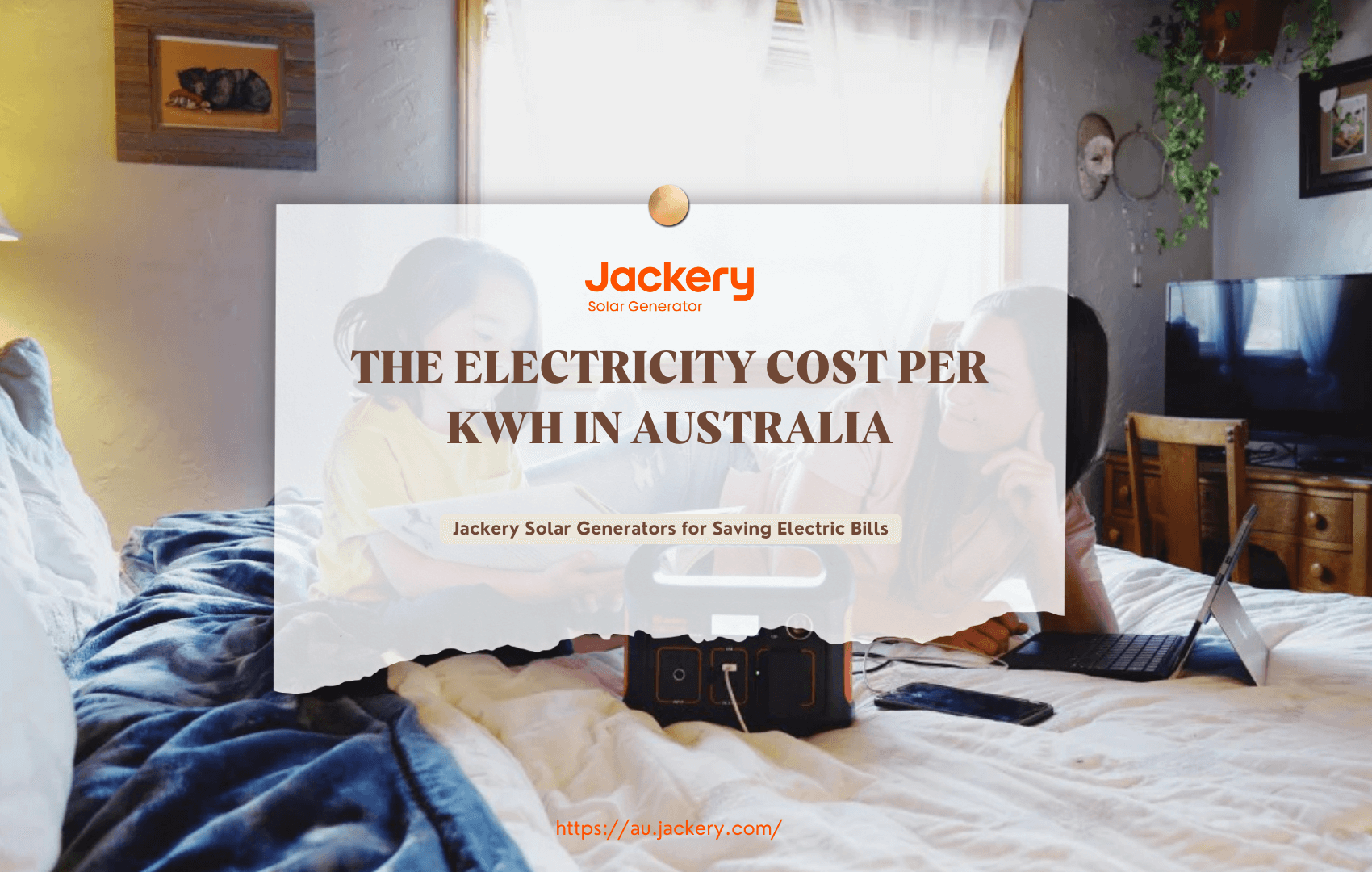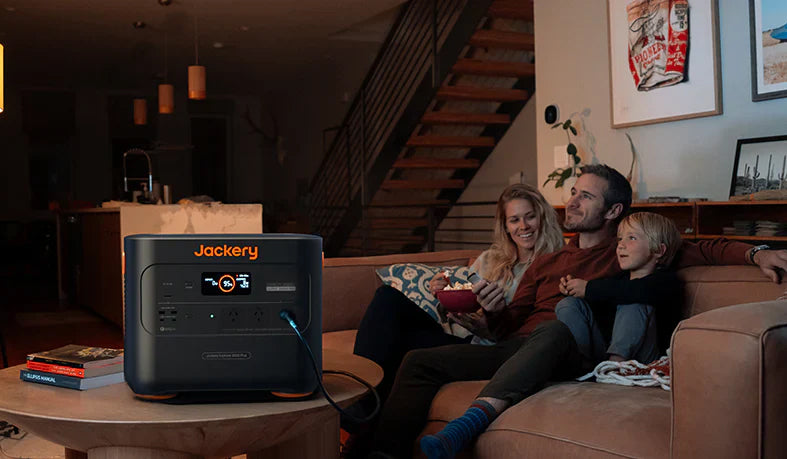|
Key Takeaways: |
|
- A 5kW solar system is a photovoltaic (PV) setup designed to generate 5 kilowatts of peak power under ideal conditions, providing substantial renewable energy for residential or small commercial use. - A typical 5kW solar system has between 15 and 20 solar panels. Solar panels are typically rated between 250 and 450 watts (W) today. - A typical 5kW solar system typically takes up between 25 and 35 square metres of rooftop space in Australia. - Australia's 5kW solar power system typically costs between $4,000 and $8,000 (after discounts). The cost of installing a system is determined by the quality of the materials and the Australian state or territory in which they are acquired. - We highly recommend the Jackery Solar Generator 2000 Plus and 1000 Plus to power essential household appliances during a power outage or other emergencies. |
What Is a 5kW Solar System?
A 5kW solar system is a photovoltaic (PV) setup designed to generate 5 kilowatts of peak power under ideal conditions, providing substantial renewable energy for residential or small commercial use. This system comprises solar panels that convert sunlight into direct current (DC) electricity, an inverter that transforms this DC into alternating current (AC) for household use, a mounting system to secure the panels, and the necessary wiring and electrical connections.
While the 5kW rating signifies the system's maximum output in optimal conditions, the energy generated varies based on location, roof orientation, shading, and system efficiency. Often, households opt for this size system to significantly offset their electricity consumption, and the addition of battery storage can further enhance its utility by storing excess energy for use during periods of low sunlight.
Components of 5kW Solar System
A 5kW solar system is a photovoltaic (PV) system designed to generate 5 kilowatts (kW) of peak power under standard test conditions. Here's a breakdown of what that means:
Solar Panels: These panels capture sunlight and convert it into direct current (DC) electricity. The number of panels required to achieve 5kW varies depending on the wattage of each panel.
Inverter: The inverter is a crucial component that converts the DC electricity generated by the solar panels into alternating current (AC) electricity used in most homes and businesses.
Mounting System: This system secures the solar panels to your roof or another suitable location, ensuring they are positioned for optimal sunlight exposure.
Battery Storage (Optional): Adding battery storage allows excess energy to be stored during low solar production, like at night.

How Many Solar Panels Are There In a 5 kW System?
A typical 5kW solar system has between 15 and 20 solar panels. Solar panels are typically rated between 250 and 450 watts (W) today. This number of panels is usually sufficient to power an ordinary Australian home. However, the precise number of these modules varies.
It is mainly determined by the efficiency levels of the exact solar panels used in the system and your household or business's unique electricity usage patterns. When it comes to solar panel dimensions, there is no one-size-fits-all solution because they vary by manufacturer and type. Additionally, the size of the panels is influenced by their intended usage, whether commercial or residential.
Calculate the Number of Solar Panels for a 5kW system
Calculating the number of solar panels for a 5kW system is straightforward. However, you'll need a couple of key pieces of information: the system's desired power output (5kW) and the wattage of the individual solar panels you plan to use. Here's a step-by-step breakdown:
Step 1: Convert kW to Watts
Since solar panel wattage is typically expressed in watts (W), you must convert the system's power output from kilowatts (kW) to watts. Remember that 1kW = 1000W. Therefore, a 5kW system is equal to 5000W.
Step 2: Determine the Wattage of Your Solar Panels
Solar panels have various wattage ratings, such as 300W, 350W, 400W, 450W, or even higher. You'll need to know the wattage of the panels you're considering. This information is usually found on the panel's specifications or product label.
Step 3: Divide the System's Total Wattage by the Panel Wattage
To calculate the number of panels needed, divide the system's total wattage (5000W) by the wattage of a single solar panel.
Formula: Number of Panels = Total System Wattage / Panel Wattage
If you're using 300W solar panels:
Number of Panels = 5000W / 300W = 16.7 panels.
The following table provides the number of solar panels required for a 5kW solar system for different solar panel ratings:
|
Rated Power of Solar Panels |
Quantity of Solar Panels |
|
250W |
20 |
|
300W |
17 |
|
350W |
15 |
|
400W |
13 |
|
450W |
12 |
The table above mentions that the quantity of solar panels I specify will generate more power than is produced. For example, if you use 300W solar panels, you will need 17 solar panels. Note, however, that this will result in a 5.1kW system.

Roof Space Required for a 5 kW Solar System
A typical 5kW solar system typically takes up between 25 and 35 square metres of rooftop space in Australia. This estimate can change depending on several factors. However, the most commonly used panels are around 1.7 metres long and 1 metre wide.
The formula below can be used to calculate the estimated roof space required for a solar system:
Required roof space equals solar panel area multiplied by the number of panels. The table below illustrates the roof space required for a 5kW solar system with different solar panel ratings:
|
Number of Solar Panels |
Roof Space Required |
|
20*(250W) |
34㎡ |
|
17*(300W) |
28.9㎡ |
|
15*(350W) |
25.5㎡ |
|
13*(400W) |
22.1㎡ |
|
12*(450W) |
20.4㎡ |
For example, if you use 300W solar panels, a 5kW solar system will require around 17 panels. Each panel is roughly 1.7 metres by 1 metre., so the total space required is approximately 28.9 square metres. However, due to the necessity for some spacing between panels and other system components, a typical 5kW solar system typically requires 25 to 35 square metres of roof space.
How Much Power Does a 5kW Solar System Generate?
A 5kW solar system will produce around 20kWh daily, depending on your location and several other criteria, such as sun irradiation, orientation and tilt angle, shade, temperature, and component efficiency. The average Australian home uses approximately 16 kWh per day.
Because solar panels generate more energy in the summer than in the winter, a 5kW solar system can provide enough electricity for an average home. While it cannot provide all the electricity for a large house, it can offset a significant portion of the electricity bill. The actual power output of a 5kW solar power system will vary depending on various factors.
These factors include:
The system's geographical location projected daily and annual solar irradiation and cloud cover levels.
The orientation and tilt angle of the solar panel array.
Is there any shade cast on the panels
The actual operating temperature of the panels
The performance of the different components (e.g., panels and inverter).
The following table shows the power generation of 5kW solar systems in several famous cities in Australia. (The data in the table are estimated values and are for reference only)
|
City |
Average Daily |
|
Adelaide, SA |
21 kWh |
|
Brisbane, QLD |
21 kWh |
|
Canberra, ACT |
21 kWh |
|
Darwin, NT |
22 kWh |
|
Hobart, TAS |
18 kWh |
|
Melbourne, VIC |
18 kWh |
|
Sydney, NSW |
22 kWh |
|
Perth, WA |
20 kWh |
(Data Source: Solar Citizens)
How Much Does a 5 kW Solar System Cost?
Australia's 5kW solar power system typically costs between $4,000 and $8,000 (after discounts). The cost of installing a system is determined by the quality of the materials and the Australian state or territory in which they are acquired. For a more enjoyable solar power experience, selecting high-quality panels over low-cost 'throwaway' options is strongly advised.
Australia has among the lowest solar system prices in the world, thanks to a wide range of global and local factors.
The table below displays the average solar panel cost by city and the installed solar panel size (DC). The costs in the tables below include an upfront incentive for small-scale systems through the Renewable Energy Target ('STC discount') and GST, representing the total retail price to the client.

This pricing includes the government's STC refund and GST but excludes state-based incentives such as Solar Victoria. These are the average prices; challenging installations on concrete or tile roofs will cost extra.
5kW Solar System Average Costs by Australian City (March 2025)
|
City |
Cost |
|
Adelaide, SA |
$4,750 |
|
Brisbane, QLD |
$4,920 |
|
Canberra, ACT |
$4,510 |
|
Darwin, NT |
$7,600 |
|
Hobart, TAS |
$6,020 |
|
Melbourne, VIC |
$5,010 |
|
Sydney, NSW |
$4,580 |
|
Perth, WA |
$3,880 |
|
All |
$5,140 |
(Data Source: Solar Choice)
Factors Impacting the Cost of a 5kW Solar System
Many factors affect the costs of a 5kW solar system:
System Component Costs
The cost of crucial components such as solar panels, inverters, mounting, and wiring will influence the price. Premium-quality and high-efficiency components usually are more expensive, but they often have a longer lifespan and stronger performance guarantees..
|
Component of 5kW Solar System |
Costs |
|
Solar Panels |
Tier-1 brands (such as Jinko, Trina, and Canadian Solar) are more expensive but provide superior efficiency and warranties. |
|
Inverter |
A quality string inverter (e.g., Fronius, SMA) costs $1,000-$2,500, whereas microinverters (e.g., Enphase) or optimisers (SolarEdge) cost $2,000-$4,000. |
|
Mounting and Wiring |
Complex roofing (e.g., tile versus tin) and additional structural work may raise expenses. |
Installation Costs
Installation expenses include labour and other associated costs incurred during the installation procedure. Different installation businesses and locations may have varying charging standards.
Prices are frequently competitive because of the increased installation density in urban locations (such as Sydney and Melbourne). Regional/rural locales may have more significant labour or transport costs.
Additional Costs
Monitoring systems, battery readiness enhancements, and electrical panel adjustments.
Government subsidies, tax breaks, and other incentives impact the overall cost of a solar system. Policies may differ across Australia's several states and territories. State-specific incentives, such as Victoria's Solar Rebate and New South Wales' Empowering Homes Programme, can lower expenses.
Jackery Solar Generators Explained
While a home solar panel system offers long-term energy independence, a solar generator presents distinct advantages, especially for those prioritising portability, flexibility, and immediate, off-grid power.
Solar generators are designed for mobility. They can be easily moved and used in various locations, from camping trips and outdoor events to temporary power solutions during blackouts. This portability is a significant advantage over fixed solar panel systems tied to a specific location.
Solar generators, like Jackery Solar Generators, require minimal setup. They are essentially plug-and-play devices, eliminating the need for complex installations, permits, and electrical work. It makes them accessible to individuals who may not be comfortable with or have the resources for a permanent solar installation.
Jackery Solar Generator 2000 Plus
The Jackery Solar Generator 2000 Plus sets a new benchmark in portable power solutions, offering unparalleled performance, safety, and durability. With a 2 to 12 kWh expandable capacity, it can quickly charge mini to large household appliances during a power outage. This solar generator is designed for longevity and reliability and is built with a LiFePO4 battery that boasts a 10-year lifespan and 4,000 charging cycles. Why this generator is suitable for charging fridge:

- Expandable Power for Home Backup: The Jackery Solar Generator 2000 Plus accommodates additional battery packs, enhancing its capacity from 2 kWh to an impressive 12 kWh, making it ideal for camping kitchen uses.
- Ultra-Long Standby: The 2000 Plus features an extended standby mode that maintains a 50% charge for up to 2 years. Feel assured that your appliances are connected to our 2000 Plus! With a 20ms EPS, essential devices such as your refrigerator and stove remain operational instantaneously during camping.
- Never Worry about Losing Power: The Solar Generator 2000 Plus requires only 2.5 hours for a complete sun charge when utilising six SolarSaga 200W solar panels. Its source achieves complete autonomy by eliminating reliance on the power grid using solar energy for charging.
|
Jackery Solar Generator 2000 Plus Working Hours |
|
|
Refrigerator (500W) |
3.3-20.4H |
|
Radio (65W) |
25.1-157H |
|
CPAP Machine (100W) |
16.3-102H |
|
TV (150W) |
10.9-68H |
|
Stove (700-800W) |
2-14.6H |
(*The working hours are only for reference; the actual working hours depend on your usage.)
Jackery Solar Generator 1000 Plus
The Jackery Solar Generator 1000 Plus, with a capacity of 1264 Wh and a 2000W output, boasts the highest production among comparable items. It accommodates 99% of devices, especially appliances, for cooling in a heatwave. This all-in-one solar generator is adaptable and scalable in capacity, designed to fuel your life. Additionally, you may manage your power station via the Jackery APP.

- Expandable Capacity for Charging More Appliances: With the expandable capacity from 1.26 to 5 kWh, it is powerful enough to charge more cooling appliances at home (to save electric bills) or outdoor activities (camping, hiking, etc.).
- Fast Solar Charging: The Solar Generator 1000 Plus combines SolarSaga 200W solar panels with Explorer 1000 Plus. It only takes 9 hours to recharge the power station fully with a solar panel, and the pass-through charging ability makes it possible to charge the power station and cooling appliances at the same time.
- Without Noise & Pollutants: Discover unparalleled serenity with our silent, emission-free technology. Participate in transforming sustainability as we proudly introduce the industry's first entirely eco-friendly packaging. It means you can safely and quietly use this solar generator at home, enhancing your energy solution with Jackery.
|
Cooling Appliances |
Working Hours |
|
Refrigerator (500W) |
2-8H |
|
Radio (65W) |
15.5-61.5H |
|
CPAP Machine (100W) |
10.08-40H |
|
TV (150W) |
6.72-26.7H |
|
Stove (700-800W) |
1.26-5H |
(*The working hours are only for reference; the actual working hours depend on your usage.)
How Much Can a 5kW Solar System Save?
More than 1.5 million Australians have switched to solar, and it's easy to see why. Understanding the savings and payback period is essential. We recommend considering the lifetime savings of a 5kW solar system in conjunction with the payback period. A better-quality 5kW solar system, which will perform better and not deteriorate at the rate of a lower-cost system, will save you an average of $350 per quarterly bill.
|
City |
System Cost (AUD) |
Annual Savings (30% Self-Consumption) |
Payback Period (30%) |
Annual Savings (50% Self-Consumption) |
Payback Period (50%) |
|
Adelaide, SA |
4,570 |
1,058.41 |
4.32 |
1,764.01 |
2.59 |
|
Brisbane, QLD |
4,920 |
926.25 |
5.31 |
1,545.00 |
3.18 |
|
Canberra, ACT |
4,510 |
976.38 |
4.62 |
1,628.44 |
2.77 |
|
Darwin, NT |
7,600 |
1,115.25 |
6.81 |
1,858.75 |
4.09 |
|
Hobart, TAS |
6,020 |
793.80 |
7.59 |
1,323.00 |
4.55 |
|
Melbourne, VIC |
5,010 |
852.88 |
5.88 |
1,422.23 |
3.52 |
|
Sydney, NSW |
4,580 |
1,115.25 |
4.11 |
1,858.75 |
2.46 |
|
Perth, WA |
3,880 |
891.50 |
4.35 |
1,487.50 |
2.61 |
Note: Annual savings and payback periods are estimates. Actual performance may vary based on individual electricity consumption patterns, system efficiency, weather conditions, and electricity tariff changes.
Is a 5 kW Solar System Right For You?
A 5kW solar system has long been a popular choice for Australian homeowners. It provides various advantages while fulfilling the energy needs of many homes. A 5kW solar system is suited for residences that use 15-20 kWh daily and consume at least 30-50% of their energy daily. We determined that a more extensive 6.6kWh system is more valuable than 20kWh.
A 5 kW solar power system is suited for most medium-large families (up to five persons) in average-sized homes with four bedrooms.
Each home is unique, so evaluating whether a specific solar system size is a good fit for your home and energy usage necessitates reviewing your bills, consumption habits, budget, and available roof space—all of which must be addressed.
You must ensure that your roof can withstand the weight of the solar panels and that your home receives adequate sunlight. If you live in an area with many trees or other structures, you may not get enough sunlight to make solar a worthwhile investment. However, solar incentives and initiatives are available to cover some initial costs.
Once you invest in solar, determine the installation and maintenance costs. Solar panels can be expensive, so make sure you can afford the up-front expense. Solar panels are typically a wise investment, particularly for homeowners with a long-term vision for their property.
5kW Solar System FAQs
The following are the frequently asked questions about the 5kW solar system in Australia.
1. How Much Electricity Can a 5kW Solar System Produce?
Depending on solar hours, panel orientation, and location, a 5kW system can produce 15-25 kWh daily. This amounts to 5,500-9,000 kWh annually (enough to power an average three- or four-bedroom house).
2. Can I Expand a 5kW System Later?
Yes! A 5 kW solar system can be expanded later on. Many solar systems are built to be scalable, which means you can add more panels or batteries as your energy requirements grow. This flexibility ensures your system can adapt to future needs without total rebuilding. If you're considering expanding, speak with a solar professional to evaluate your current system and plan for future additions. They can assist you in comprehending the system's expansion potential and assure compatibility with existing components.
3. How Long Do Solar Panels Last?
In Australia, solar panels typically last 25 to 30 years. Panel quality, ambient conditions, and maintenance can all impact the longevity and effectiveness of these devices. In Australia, panels decay at 0.25% to 1% each year after the first year. However, with technological breakthroughs and high-quality options, they can continue to perform well beyond their anticipated lifespan. Proper maintenance and installation, comprehension of warranties, and awareness of technical advances are critical to maximising the longevity of solar panels.
4. Is a 5 kW Solar System Sufficient to Power a House?
Yes, a 5 kW solar power system is suitable for most medium-large families (up to five persons) in average-sized homes with up to four bedrooms. These systems are popular since they cover more than the average electricity expense in these situations. With a high-quality, long-lasting battery system, you can go off-grid and save money on electricity for decades.
5. How Much Space is Required on the Roof for a Solar Power System?
To accommodate the 20 solar panels, you'll need approximately 36 m2 of roof space. Not every home will have this much roof space available. Still, thanks to significant advancements in solar technology, several options exist for installing solar panels when space is limited. Speak with a professional if you have any concerns or questions.
Final Thoughts
In short, a 5kW solar system is an excellent investment for many Australian houses. It can dramatically reduce your electricity expenses while providing a speedy return on investment. With government incentives such as STCs lowering initial costs, now is an excellent time to consider installing one. However, a 5kW solar system is ideal for homes with ordinary electricity consumption.

